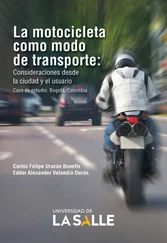The mention of divinity must have put him in the spirit of the mystic revelations because he was soon talking of the hyperspheres of human lives whose centers are world points and the possibility of escaping from such prisons. The centers represented birth and the surfaces death. Consequently we always reach our end at the same time-distance regardless of the direction we chose. But liberation had something to do with still higher dimensionalities: “Add one more coordinate and you are saved!” he shouted, convulsed with laughter. He was addressing the Señor Olózaga who had come awake again and was punishing the rum bottle. “As an Oriental you should know and appreciate these things, Chink.” The Señor Olózaga smiled and the Moor began to talk again more earnestly to de los Rios. I was trying not to listen. Between the tapitas, wine, rice and clams and the notes, there was no point in adding more to the confusion. I ate some more of the ropa vieja, took a moderate swallow and settled again with the notes:
. disregarding the postulated interchangeability of dimensions, the fourth should be properly considered the first since nothing can be without it. A point is really a line into the fourth dimension. When it stands still, it is parallel to the fourth coordinate; when it deviates from this, it appears to move, but in reality we are only tracing its length. If it moves rapidly enough, it appears as the line it really is, fading into the fourth dimension, because its inclination approaches more our three dimensional field.
I thought this was undisguised pseudology. It disregarded completely the impression left in the retina, but it maintained an apparent consistency. I doubted the seriousness of the Moor but that was his way: to leave one wondering whether he was joking, considering one always as unworthy of his serious controversy. Since that occasion, this unflattering suspicion has only become more of a certainty, but somehow one does not mind where the Moor is concerned. Therefore I did not voice my objections and besides, he did not seem to be in a serious mood for discussion any longer. Instead I turned over some sheets and read further on:
Modern science is disconcerted and desperate and its last hope is the second law of thermodynamics, that most dramatic and also fateful of all laws, but even this must be denied in a system of simplification. They claim that there is always more entropy in the future than in the past, that this is an index to the time vector, as the centrifugal force was the last hope of the absolutists— completely confused. It reduces to the problem of the other side of the street always being where we are not. A simple geometrical construction shows that there are always more things away from us than close by. When one is at the end of a street, one can see more buildings at the other end than close by, but the fellow at the other end sees the same thing in reverse and both conclude that there are more things far than near and decide that they agree and that this is an index to a very clever city planning and prepare letters of congratulation to the mayor for having arranged things so wisely that they find themselves where there is room to move, because considering how crowded the buildings look at a distance, it would have been very inconvenient to have been located there — impossible to get out or even move. Absurd! A result of muddled thinking due to demoralization. The whole question is but a matter of isentropic perspective along the fourth perpendicular. Like a man standing on a sphere (silly as it sounds) who finds its surface curving away from him in the same manner regardless of the point he occupies or the direction in which he looks— No more drama and no more fatefulness.
To allow the question of time and motion to enter the discussion only leads to those paradoxes of the infinitely small and infinitely big which have marred scientific history since time immemorial and continue to embarrass any pedagogue who takes his job seriously. It even placed Newton on the losing end of a theologico-mathematical argument when all the time he knew that he was right, and all this over the thing that is elusive to the vanishing point; the derivative, which can never satisfy the demands of our intuitive reason. Yet, if geometrically considered, the thing satisfies the stiffest requirements of both our intuition and mysticism and even the most hyperdialectic bishop has to recognize a tangent to a curve when he sees it.
Toward the end of the opus, bold type arrested my eyes and then sent them back a few lines:
. once the illusory nature of motion has been detected and exposed, not only do all such embarrassing situations evaporate, but by the above axioms, one can stop making laws about imaginary things, discard unwarranted assumptions and thus, with greater generalization, arrive at the
FUNDAMENTAL POSTULATE
The configurations of any given reference system appear as motion in any different system of reference
Perhaps because it was thus set apart, I read it aloud without thinking. All at once it rebounded scattered in crashing applause, laughter and words from the Moor:
“Wonderful parrot act, my lad! Commit that to memory. You now hold the key. That is my testament and I bequeath its implications to mathematicians and physicists alike, to think them over and argue them.” More noisy display.
With withering, unflinching equanimity, I disregarded the clownish outbursts and read what seemed to be written in a more serious vein:
From this fundamental postulate, all the laws of mechanics can be disengaged more naturally by the application of logic. All these reference systems are equivalent and differ only in their position with respect to one another within the general plenum where they coexist. It is their orientation that we refer to as inertia.
Motion varies as the difference between the systems. As this difference diminishes, the apparent motion also decreases until, in the limiting case, it vanishes, the systems coincide, become identical and the motion is zero. Force, acceleration, stress, etc., are but ways of looking at and evaluating this difference between the systems and their mutual impingement.
But since this difference or reciprocal displacement apprehended as motion assumes tacitly an extension not contained in the three dimensions of the space of our common experience and since, by our own definition, motion implies time, we are led inevitably to label time as another dimension. This is a test of the fundamental postulate’s strength in guiding us to conclusions which our intuition fails to disclose. One should not accept one’s impressions and then derive laws from them. One should formulate postulates epistemologically, in their greater generality, and then allow them to help reach conclusions despite impressions.
I turned the page and read on:
If we conceive of every particle of matter (and this provisionally, as we do not know clearly what we mean by particle and by matter) as determining a reference system, the more of them that coincide, the greater the common system; hence, the greater the mass, the inertia, etc., which are but the quantity of the system. A misunderstanding of this has led to the confused idea that the presence of matter creates space and time.
There is nothing startling about these revelations. It has long been accepted that vibrations of air create the impression of sound — for that matter, a visible wave, the thread of a turning screw pointing perpendicularly to the line of vision and that little machine which I have exhibited at previous lectures are instances showing that, at least, the direction of motion may be illusory and deceptive, and there are many other sensations which are accepted as our own interpretation. The truly perplexing fact is that no one suspected motion in general long ago of belonging to the realm of illusion and of being one of these interpretations. Without doubting its reality and without knowing what it was, they went right ahead and formulated its laws, exactly as later physics, without knowing what light is, went right ahead and measured what appeared as its speed.
Читать дальше












